William Henry Fox Talbot (11 février 1800 - 17 septembre 1877) est un scientifique britannique, devenu l’un des pionniers de la photographie. Il était à la fois mathématicien, physicien et philologue ; également intéressé par la botanique, la philosophie et l’archéologie, il pratiquait plusieurs langues.
Actualité Trois films d'animation pour trois pionniers de la photographie Exposition Fine photographs to show early British Masters of photography at Photo London Exposition Exhibition : Portraits and other 19th Century Photographs Exposition Tablot's world : a gallery of natural magic at Hans P.Kraus Jr Exposition L'objet photographique, une invention permanente Exposition Works by Talbot, Bayard, Atkins, Le Gray, Coburn, Kuhn Exposition Surfaces sensibles Modifier l'image
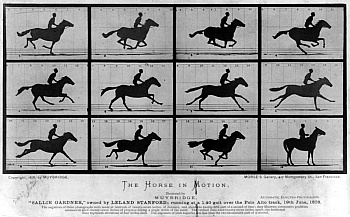 Drew Christie et Dane Herforth ont créé pour le SFMOMA (San Francisco Museum Of Modern Art) trois courts-métrages d'animation sur Carleton Watkins, William Henry Fox Talbot et Eadweard Muybridge, sans qui la photographie ou encore le cinéma n'existeraient pas aujourd'hui. Un bel hommage sur le fond comme sur la forme.
Oubliés trop vite alors qu'ils sont essentiels. Les trois documentaires en images animées reviennent sur les vies de trois hommes fondateurs des procédés photographiques. Si Henry Fox Talbot était frustré par le fait de ne pas savoir dessiner précisément, il a néanmoins créé le tirage négatif dès 1833. Cette invention fondamentale a cependan...
Drew Christie et Dane Herforth ont créé pour le SFMOMA (San Francisco Museum Of Modern Art) trois courts-métrages d'animation sur Carleton Watkins, William Henry Fox Talbot et Eadweard Muybridge, sans qui la photographie ou encore le cinéma n'existeraient pas aujourd'hui. Un bel hommage sur le fond comme sur la forme.
Oubliés trop vite alors qu'ils sont essentiels. Les trois documentaires en images animées reviennent sur les vies de trois hommes fondateurs des procédés photographiques. Si Henry Fox Talbot était frustré par le fait de ne pas savoir dessiner précisément, il a néanmoins créé le tirage négatif dès 1833. Cette invention fondamentale a cependan...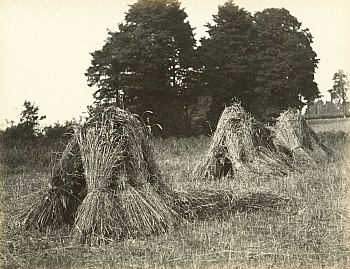 Hans P. Kraus Jr. Fine Photographs will show work by early British masters at Photo London 19-22 May 2016 at Somerset House. Work by William Henry Fox Talbot, Nicolaas Henneman, Hugh Owen, and Benjamin Brecknell Turner, among others, will be on view. Photogenic drawings, salt prints and other photographs ranging in date from 1839, the year that Talbot announced his invention of photography, through the 1860s, when photography was flourishing more widely. The occasion for this selection of Talbot’s work is to coincide with the exhibition Fox Talbot: Dawn of the Photograph currently at the Science Museum in London.
Of all the people critical to the story of the introduction of photography, the one with perhaps the most humble beginnings is Nicolaas Henneman, who was born in the Netherlands in 1813 and was a valet ...
Hans P. Kraus Jr. Fine Photographs will show work by early British masters at Photo London 19-22 May 2016 at Somerset House. Work by William Henry Fox Talbot, Nicolaas Henneman, Hugh Owen, and Benjamin Brecknell Turner, among others, will be on view. Photogenic drawings, salt prints and other photographs ranging in date from 1839, the year that Talbot announced his invention of photography, through the 1860s, when photography was flourishing more widely. The occasion for this selection of Talbot’s work is to coincide with the exhibition Fox Talbot: Dawn of the Photograph currently at the Science Museum in London.
Of all the people critical to the story of the introduction of photography, the one with perhaps the most humble beginnings is Nicolaas Henneman, who was born in the Netherlands in 1813 and was a valet ...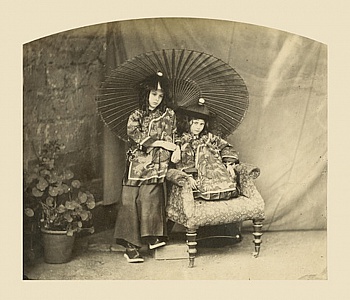 Maastricht, The Netherlands— A group of portraits from the 1840s to the 1870s will be featured along with other 19th century photographs at Hans P. Kraus Jr. Fine Photographs at TEFAF Maastricht, 13-22 March 2015, Stand 452. Work by Lewis Carroll, Julia Margaret Cameron, Duchenne de Boulogne with Adrien Tournachon, Gustave Le Gray, Charges Nègre, and William Henry Fox Talbot will be on view.
As a tribute to the 150th anniversary of the publication of Alice in Wonderland, an exquisite albumen print of Alice and her sister will be on view: Lorina and Alice Liddell in Chinese costume, c.1860, by Lewis Carroll (English, 1832-1898). Carroll was a mathematics tutor at Christ Church, Oxford, who became a remarkably gifted photographer. Made with his characteristic care and attention to detail, this compelling port...
Maastricht, The Netherlands— A group of portraits from the 1840s to the 1870s will be featured along with other 19th century photographs at Hans P. Kraus Jr. Fine Photographs at TEFAF Maastricht, 13-22 March 2015, Stand 452. Work by Lewis Carroll, Julia Margaret Cameron, Duchenne de Boulogne with Adrien Tournachon, Gustave Le Gray, Charges Nègre, and William Henry Fox Talbot will be on view.
As a tribute to the 150th anniversary of the publication of Alice in Wonderland, an exquisite albumen print of Alice and her sister will be on view: Lorina and Alice Liddell in Chinese costume, c.1860, by Lewis Carroll (English, 1832-1898). Carroll was a mathematics tutor at Christ Church, Oxford, who became a remarkably gifted photographer. Made with his characteristic care and attention to detail, this compelling port...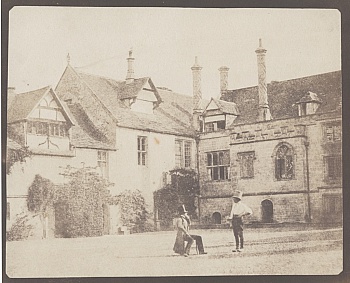 An exhibition of early work by William Henry Fox Talbot, the inventor of the photographic negative, will be on view at Hans P. Kraus Jr. Fine Photographs from September 25 through November 2, 2012. Talbot’s World: A Gallery of Natural Magic will present more than 25 photogenic drawings, calotype negatives, and salt prints, 1839-1844, comprising a rare selection of photographs on paper from these early years. Most of the works have never before been displayed. A fully illustrated catalogue with text by the Talbot scholar Larry J. Schaaf accompanies the exhibition.
William Henry Fox Talbot (1800-1877), a brilliant scientist, conceived of the art of photography during the 1830s, combining the use of a camera obscura with light-sensitive chemistry. Unlike the other early photographic processes, heliography and t...
An exhibition of early work by William Henry Fox Talbot, the inventor of the photographic negative, will be on view at Hans P. Kraus Jr. Fine Photographs from September 25 through November 2, 2012. Talbot’s World: A Gallery of Natural Magic will present more than 25 photogenic drawings, calotype negatives, and salt prints, 1839-1844, comprising a rare selection of photographs on paper from these early years. Most of the works have never before been displayed. A fully illustrated catalogue with text by the Talbot scholar Larry J. Schaaf accompanies the exhibition.
William Henry Fox Talbot (1800-1877), a brilliant scientist, conceived of the art of photography during the 1830s, combining the use of a camera obscura with light-sensitive chemistry. Unlike the other early photographic processes, heliography and t...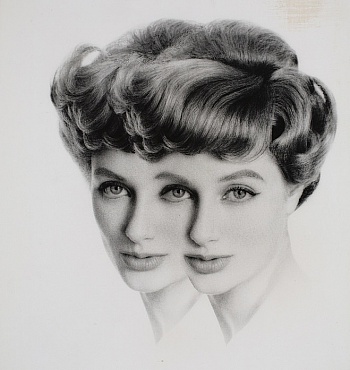 L’exposition L’objet photographique : une invention permanente propose de découvrir l’ensemble des dispositifs de prise de vue (contact, sténopé, objectif photographique...) et des processus de fabrication ou de modification des divers «objets» (positifs directs, négatifs, tirages...) qui constituent l’atelier du photographe.
Ces objets, résultats des possibilités techniques de chaque époque mais aussi de leurs contraintes, sont le reflet des perpétuelles mutations ayant jalonné l’histoire de la photographie. Les œuvres choisies montrent que création photographique et innovation technique sont intimement liées : chaque nouveau procédé a considérablement transformé...
L’exposition L’objet photographique : une invention permanente propose de découvrir l’ensemble des dispositifs de prise de vue (contact, sténopé, objectif photographique...) et des processus de fabrication ou de modification des divers «objets» (positifs directs, négatifs, tirages...) qui constituent l’atelier du photographe.
Ces objets, résultats des possibilités techniques de chaque époque mais aussi de leurs contraintes, sont le reflet des perpétuelles mutations ayant jalonné l’histoire de la photographie. Les œuvres choisies montrent que création photographique et innovation technique sont intimement liées : chaque nouveau procédé a considérablement transformé...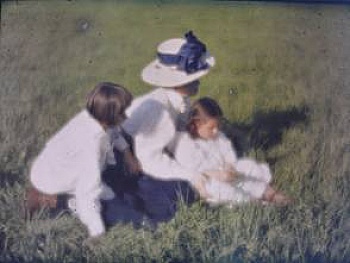 Basel, Switzerland – Exhibiting for the 21st year at Art Basel, Hans P. Kraus Jr. Fine Photographs will present landmark works from the early history of photography. Signature images will be on view from such important innovators as William Henry Fox Talbot, Hippolyte Bayard, Anna Atkins and Gustave Le Gray as well as works by early 20th century masters such as Alvin Langdon Coburn and Heinrich Kühn.
William Henry Fox Talbot (1800-1877) conceived of the very idea of photography during the 1830s, combining the use of the camera obscura with light sensitive-chemistry. Ela, an intimate portrait from the early 1840s, depicts the photographer’s young daughter gazing pensively beyond the camera.
Hippolyte Bayard (1801-1887), whose early photographic discoveries were perhaps eclipsed by those...
Basel, Switzerland – Exhibiting for the 21st year at Art Basel, Hans P. Kraus Jr. Fine Photographs will present landmark works from the early history of photography. Signature images will be on view from such important innovators as William Henry Fox Talbot, Hippolyte Bayard, Anna Atkins and Gustave Le Gray as well as works by early 20th century masters such as Alvin Langdon Coburn and Heinrich Kühn.
William Henry Fox Talbot (1800-1877) conceived of the very idea of photography during the 1830s, combining the use of the camera obscura with light sensitive-chemistry. Ela, an intimate portrait from the early 1840s, depicts the photographer’s young daughter gazing pensively beyond the camera.
Hippolyte Bayard (1801-1887), whose early photographic discoveries were perhaps eclipsed by those...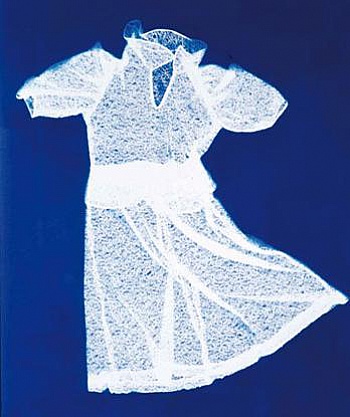 Les photographies mettant en œuvre la dentelle dans sa relation au corps, au vêtement, à la mode ou comme sujet d’expérimentation des procédés photographiques : voici un joli pont « jeté » entre les deux grands départements beaux-arts et dentelle dans les années 1990 alors que la Cité Internationale de la Dentelle et de la Mode n’est alors qu’à l’état de projet.
Aujourd’hui où les deux collections s’apprêtent à prendre leur envol dans deux lieux distincts, il reste entre eux, comme un trait d’union, la thématique des représentations symboliques liées à la dentelle.
Photo :
© Nancy Wilson-Pajic - Musée des beaux-arts...
Les photographies mettant en œuvre la dentelle dans sa relation au corps, au vêtement, à la mode ou comme sujet d’expérimentation des procédés photographiques : voici un joli pont « jeté » entre les deux grands départements beaux-arts et dentelle dans les années 1990 alors que la Cité Internationale de la Dentelle et de la Mode n’est alors qu’à l’état de projet.
Aujourd’hui où les deux collections s’apprêtent à prendre leur envol dans deux lieux distincts, il reste entre eux, comme un trait d’union, la thématique des représentations symboliques liées à la dentelle.
Photo :
© Nancy Wilson-Pajic - Musée des beaux-arts...